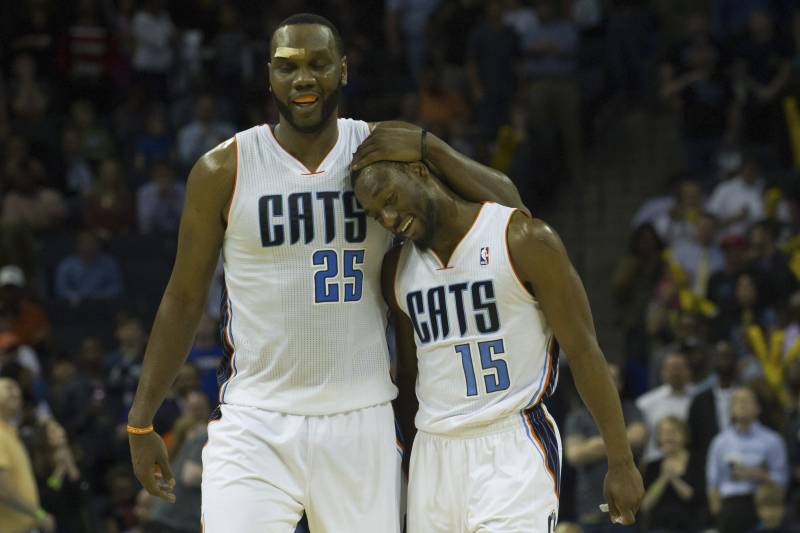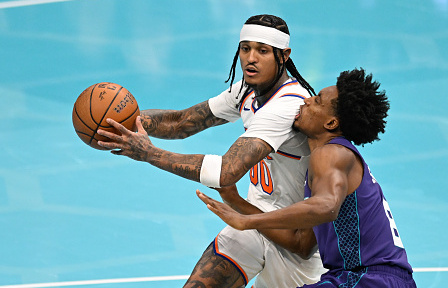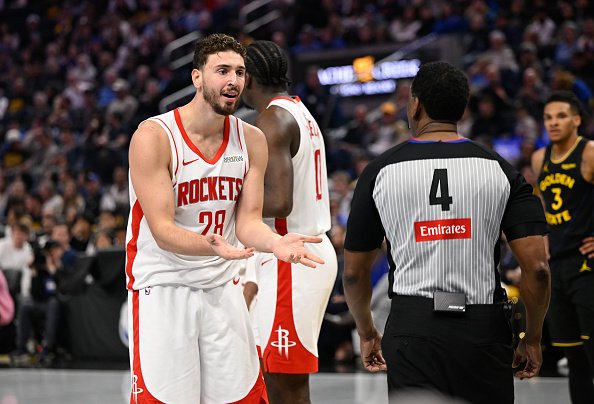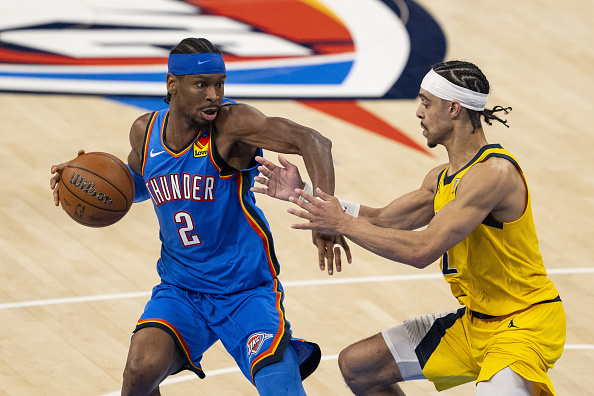The Charlotte Hornets have a confusing history. An organization that took over a city that once had another NBA organization run it with the same name and logo.
This Charlotte team had its first season in 2004, and when first founded, they were named the Charlotte Bobcats.
The early stages of a new organization in a sports league are never pretty or go as planned in most cases. It is hard to have success right away; nobody can be like the Vegas Golden Knights from the NHL. Although the team started off working as an actual franchise and made moves to assure that their team could withstand the NBA.
They would trade for the second overall pick in the 2004 draft; which would be Emeka Okafor.
Although at the time Okafor seemed like a great idea to build a franchise around, his production was based on playing on terrible teams. Okafor would put up solid numbers in his time with Charlotte, averaging a double-double (14 points and 10.7 rebounds). The Bobcats would not find themselves in playoff contention while he was with the organization.
Charlotte, like most first-year organizations, were abysmal in their first season. They would go 18-64 and start to see improvements as the years would go on. From 18 wins to 26 in the second year, Charlotte seemed to be headed in the right direction. They would even improve the following year by winning 33 games. But, this is where the trouble would begin for this organization.
As good as Okafor was for the Charlotte team, he could not be the franchise player. And the biggest problem that would surround this organization was scouting and front office in regards to draft prospects.
In 2006, the Charlotte Bobcats would hire Hall of Famer Michael Jordan to run their operations. From their start in 2004 up until 2010, the team would have a top 10 pick in the draft.
They would select Raymond Felton in 2005 over better players such as Danny Granger, Andrew Bynum, and David Lee. In 2006, they drafted an injury-prone with problems off the court in Adam Morrison with the third pick.
Analysts said his game would mimic the legendary Larry Bird, and Charlotte took the bait. Morrison would only last five seasons in the NBA. They drafted Morrison over safer players such as Rudy Gay and Brandon Roy.
In 2007, they drafted center Brandan Wright but would trade him to the Golden State Warriors for Jason Richardson. This was a great trade for the franchise, as they received a player that could lead their team in scoring consistently.
However, Richardson became irate with the franchise’s lack of motivation to build a winning team after just one season. A half-year later, they would trade Richardson to the Phoenix Suns for Raja Bell, Boris Diaw, and Sean Singletary.
In that same draft that they traded Wright, they would also select Jared Dudley with the 22nd pick. Another year where they could’ve picked potential All-Star talent over these players. And yes, hindsight is 20-20, but having consecutive years in which the front office picks the most dysfunctional players over safer picks is a sight to behold.
It doesn’t end here.
In 2008, the team selected D.J. Augustin with the ninth overall pick despite already having a young guard in Raymond Felton.
The team already had four disappointing years of Okafor roaming the paint, and their wings were decent as they had acquired Gerald Wallace the previous season. So what the team needed to fix was their big man situation. Yet they drafted a guard over players such as Brook Lopez, Roy Hibbert, JaVale McGee, and many more talented bigs.
The 2008 draft class was full of productive big men, and the team could have gone in any direction with the type of big man to help Okafor in the paint or spread the floor. Yet Michael Jordan and his front office team decided to draft another guard to “compete” with Felton and drafted a European big man that at the time was considered a huge project.
Jordan had the chance to draft a center or power forward that could compliment Okafor or have the potential to replace Okafor. But he selected the only big men in the draft that was considered a long term project.
In 2009, the team avoided a top 10 pick for the first time in franchise history, which proved traumatic for Charlotte’s future. As the 2009 draft has had multiple MVP-type players go before Charlotte could draft. With the 12th pick in this draft, they would select guard Gerald Henderson.
Another pick, and another miss by the Charlotte Hornets.
Henderson was just another rotational player for a franchise with no stars. Just like players before him in Felton, Dudley, and Augustin, they have all been nothing but good rotational pieces to a winning organization.
Sadly, the Hornets are not a winning organization.
Jordan missed on players such as Jrue Holiday, Taj Gibson and Ty Lawson in this draft. Although these players are not consistent All-Stars or even All-Star-type players, they would have had a bigger impact on this abysmal Hornets team.
The 2009-2010 season saw changes for the organization. As partial owner and head of the front office Michael Jordan, decided to take the organization under his wing fully. As he would purchase the majority stake of the Charlotte Hornets. Although this was a very historical moment in the NBA, Jordan became the first former player to buy an organization. It would also become the most frustrating time in Hornets’ history.
The Hornets would make their first playoff appearance since entering the league in 2004, as they would finish the 2009-2010 season as the seventh seed. Their first winning season, and their first season going above .500 as they would hold a winning record of 44-38. The reward that this team received was facing the basically unstoppable at the time Dwight Howard and the Orlando Magic. They would be swept by Orlando, and the team would shoot drastically downhill from there.
The next three seasons were awful to watch as an NBA fan. In 2010, they would only win 34 games; giving them the ninth pick in the draft. And for the very first time, the organization would draft a talented player.
With the ninth selection in the 2011 NBA Draft, they chose Kemba Walker. Walker would be an eventual All-Star for the Hornets, and well would be the only All-Star they would ever draft. But just because Jordan and his team had a great pick in the 2011 Draft, does not mean he will end the draft winning.
With the 19th pick, they would select forward Tobias Harris. But, instead of keeping him, they traded him to the Milwaukee Bucks for Corey Maggette and Bismack Biyombo.
Harris has never been an All-Star in his career, but he would eventually become one of the NBA’s best scoring forwards, and one of the best wingmen to a superstar for a franchise. The Hornets, who received Maggette and Biyombo, would receive an aging and injury-prone forward along with another unknown center that would take years to develop to their roster.








One Response